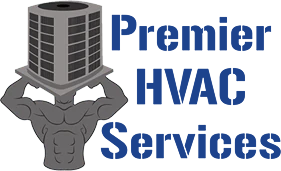AC Installation in Forney, Texas
Premier HVAC Services is your go-to expert for professional AC installation in Forney, TX. Specializing in both residential and commercial air conditioning solutions, our team is dedicated to ensuring your space achieves the perfect balance of comfort and efficiency. With the Texas heat being more than just a seasonal challenge, a reliable and effective AC system is essential. Our certified technicians leverage the latest technology and high-quality equipment to provide customized installations that meet your specific needs and preferences. Committed to excellence, we strive to enhance your indoor air quality and comfort with energy-efficient and durable AC systems.
Ready to upgrade your comfort with a new AC system? Contact Premier HVAC Services at (469) 720-4539 for expert installation and straightforward pricing.
In Forney, TX, where temperatures can soar to extreme highs, having an efficient and reliable air conditioning system isn’t just a luxury—it’s a necessity. At Premier HVAC Services, we understand the importance of a seamless AC installation process, which is why we offer comprehensive services tailored to both residential and commercial properties. Our goal is to ensure your new AC system not only meets but exceeds your cooling expectations, providing a refuge from the outdoor heat.
Why Choose Premier HVAC Services for AC Installation?
Experienced Technicians: Our team comprises highly skilled and certified professionals who are knowledgeable about the latest AC models and installation techniques. We ensure your AC system is installed correctly and efficiently.
Customized Solutions: We recognize that every property has unique cooling needs. Our experts work closely with you to determine the best AC system that fits your space, lifestyle, and budget, ensuring optimal comfort and performance.
Straightforward Pricing: Transparency is key to our customer service. Premier HVAC Services offers clear, upfront pricing on all our AC installation services, so you understand the cost involved without any hidden fees.
Quality Equipment: We partner with leading manufacturers to supply the most reliable and energy-efficient AC systems available, ensuring long-term satisfaction with your investment.
Comprehensive Services: Beyond installation, we provide a full suite of services, including maintenance and repairs, to keep your AC system running smoothly for years to come.
Our AC Installation Process
Premier HVAC Services follows a meticulous process for AC installation in Forney, TX, ensuring every project is executed flawlessly:
- Initial Consultation: We begin with a thorough assessment of your property to understand your cooling needs, preferences, and any specific challenges.
- System Selection: Based on the initial consultation, we recommend the best AC system that matches your requirements, focusing on size, efficiency, and budget.
- Customized Installation Plan: Our technicians design a customized installation plan, ensuring seamless integration with your existing ventilation and electrical systems.
- Professional Installation: We carry out the installation with precision and attention to detail, ensuring your new AC system functions perfectly from the start.
- System Testing and Calibration: After installation, we test the AC system thoroughly to ensure it operates efficiently and calibrate it for optimal performance.
- Customer Education: We take the time to explain your new AC system’s features and maintenance requirements, ensuring you’re fully informed about how to keep it running efficiently.
Schedule Your AC Installation in Forney, TX Today
Don’t let the Texas heat compromise your comfort. Whether you’re building a new home, upgrading your current AC system, or installing an AC unit in your commercial property, Premier HVAC Services has the expertise and solutions you need. Our commitment to quality, customer satisfaction, and straightforward pricing makes us the preferred choice for AC installation in Forney, TX.
Contact Premier HVAC Services today at (469) 720-4539 to schedule your AC installation. Let our team of experts help you achieve the perfect indoor climate for your home or business. With Premier HVAC Services, you can expect nothing less than the highest standards of service and professionalism for your AC installation needs.
